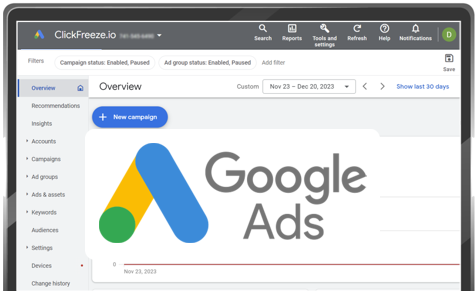
Safeguarding Your Ad Budget: A Guide to Claiming Google Ads Refunds for Invalid Clicks
While managing ad campaigns, ensuring your ad budget is well-spent is crucial. If you've noticed an unusual number of clicks on your Google Ads without a corresponding increase in conversions, you might be dealing with invalid traffic (IVT).
Here's a guide on how to claim a refund for these invalid clicks.
Understanding the Issue:
Invalid traffic, or IVT, refers to clicks on paid ads that have no chance of turning into genuine customers. This could be accidental clicks from humans or clicks from bots, web crawlers, or malware sources. While Google filters some invalid traffic automatically, a significant portion can go unnoticed, leading to extra costs for advertisers.
Google's Involvement:
Yes, Google does filter some invalid traffic, but the reality is that a substantial amount, approximately 15% of all clicks on paid ads, still goes undetected. This means advertisers end up paying for fake clicks that slip through the filters.
Determining the Need for Refund:
Before claiming a refund for invalid clicks, you need to analyze your ad campaigns for specific evidence of fake traffic. Look out for surges in traffic at unusual times, high bounce rates, multiple clicks from the same IP address, or clicks from outside your geo-targeted areas.
Initiating the Refund Process:
If you're ready to claim a refund for invalid clicks, you can use Google's click quality form https://support.google.com/google-ads/contact/click_quality.
The form requires details such as dates, affected keywords, suspicious IP addresses, and requests for weblogs or images of analysis.
While there's no guarantee of a refund, it's a step towards addressing the issue.
Ensuring Accuracy:
It's essential to double-check that the issues you're facing are indeed due to invalid traffic. Factors like poorly optimized landing pages, non-mobile-optimized sites, or slow loading pages can impact ad performance.
Rule out these issues before initiating a refund claim.
Frequency of Refund Claims:
There are no restrictions on when or how many times you can request a refund for invalid clicks. However, the process can be time-consuming, and there's no assurance of a refund. Regularly monitor your ads for suspicious traffic and consider adjusting your ads to avoid certain types of click fraud.
A Smarter Approach:
To proactively protect against invalid clicks and save time on refund claim forms, consider automatic protection. Services like ClickFreeze offer real-time click fraud prevention for Google Ads. Their machine learning algorithms constantly update blocklists to identify sources of fraud, providing insight into ad performance and processing refund requests for clicks that slipped through.
Safeguarding your ad budget from invalid clicks is a crucial aspect of successful digital advertising.
Whether you choose to manually claim refunds or opt for automated protection, staying vigilant and informed is key in the ever-evolving landscape of online advertising.
Block harmful traffic and improve your ads performance.
Block harmful traffic and improve your ads performance.
Setup your ClickFreeze account in minutes, ensuring your campaigns are safe, monitored, and protected.
